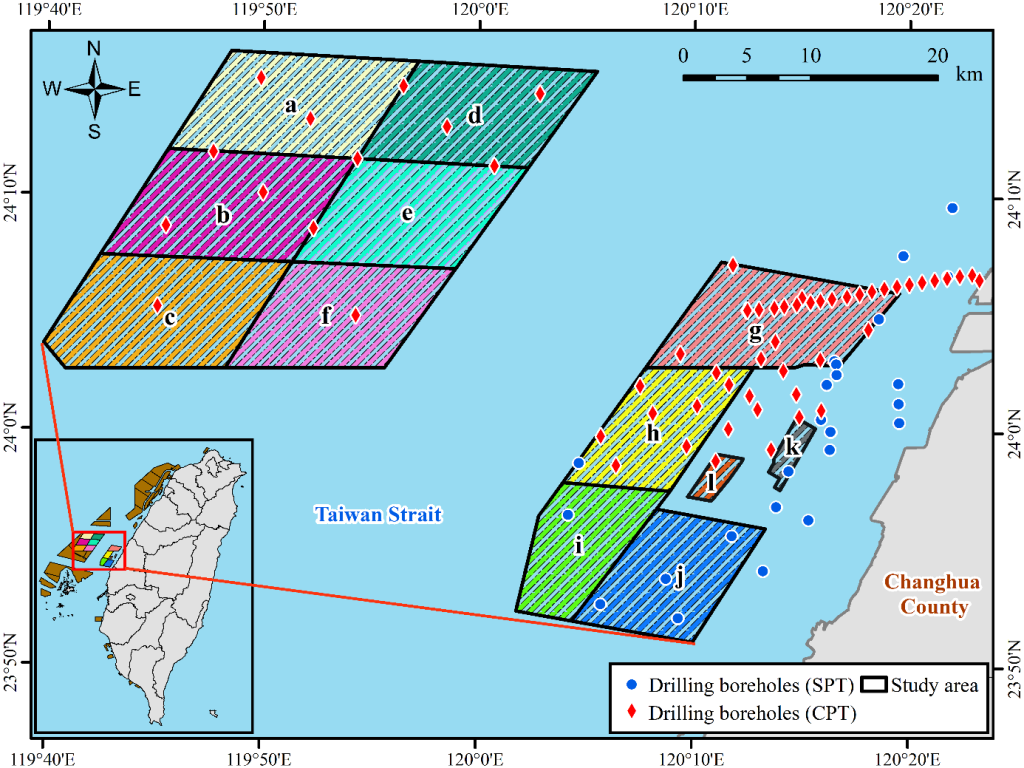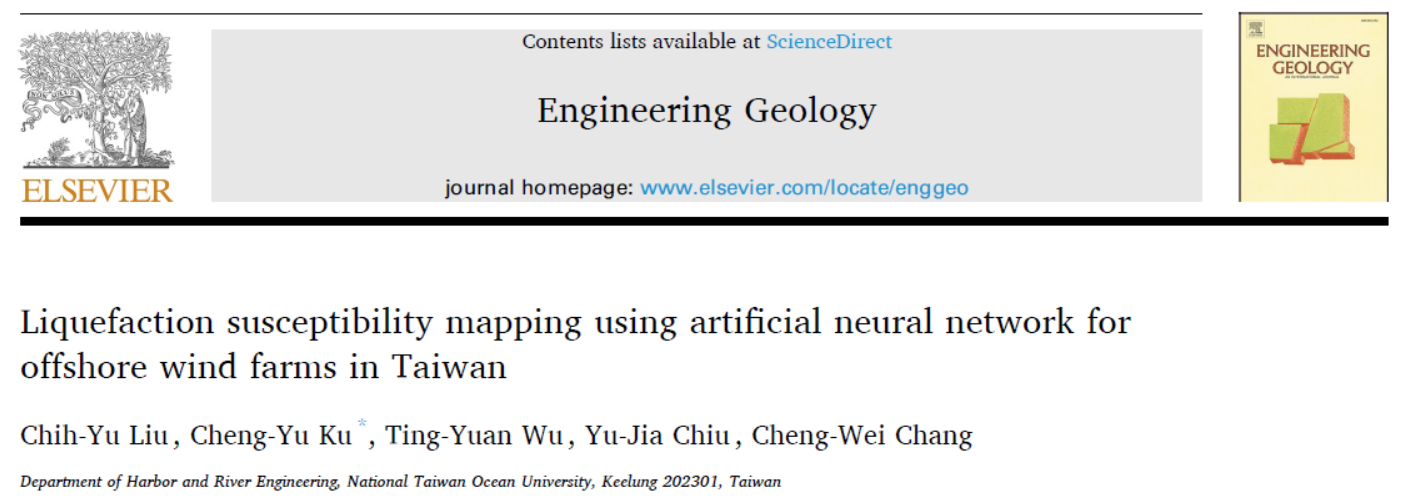ABSTRACT
In seismically active Taiwan, soil liquefaction poses a significant challenge to offshore wind farm development. This study introduces an advanced artificial neural network (ANN) model to assess liquefaction susceptibility, trained on a synthetic database using parameters from the NCEER method. Among six machine learning techniques evaluated, the proposed ANN model demonstrated outstanding predictive accuracy, achieving 100% accuracy in distinguishing between liquefaction and non-liquefaction across 112 actual cases. A key innovation of this model is its ability to maintain high accuracy over 91% using fewer input parameters than traditional methods. This study expands the use of geographic information system integrated with the ANN model to predict soil liquefaction potential at offshore wind farm sites, utilizing 120 offshore borehole logs from previously unassessed marine areas in western Taiwan. Results indicate that six out of the twelve offshore wind farm areas have the highest liquefaction potential across all three depths. The study also highlights the critical role of the SPT-N value in offshore liquefaction assessments.
Keywords: soil liquefaction; machine learning; artificial neural network; offshore wind farm; susceptibility.
Highlights
- An ANN model demonstrated exceptional predictive capabilities, achieving a remarkable 100% accuracy in distinguishing between liquefaction and non-liquefaction events across 112 actual cases in Taichung, Taiwan.
- Among six machine learning techniques evaluated, the proposed ANN model demonstrated outstanding predictive accuracy, achieving 100% accuracy in distinguishing between liquefaction and non-liquefaction across 112 actual cases in Taiwan.
- The model predicts liquefaction using fewer input parameters, maintaining over 91 % accuracy without one of critical inputs such as depth, effective overburden stress, total overburden stress, and soil fine content.
- By considering depths with 1.5-meter intervals, this study generated highly detailed soil liquefaction risk maps. This finer resolution allows for a more accurate and comprehensive evaluation, directly addressing practical design needs for offshore wind farm developments.
- This study highlights the critical role of the SPT-N value in soil liquefaction assessments and emphasizes the necessity of energy calibration in SPT-based evaluations.

Chih-Yu Liu, Cheng-Yu Ku*, Ting-Yuan Wu, Yu-Jia Chiu, Cheng-Wei Chang (2025), ” Liquefaction Susceptibility Mapping Using Artificial Neural Network for Offshore Wind Farms in Taiwan”, Engineering Geology, Vol. 351, 108013, pp. 1-17, 2025. (SCIE, IF 6.9, Q1, 3/63 (4% JIF) in ENGINEERING, GEOLOGICAL, JCR 2023)
https://doi.org/10.1016/j.enggeo.2025.108013
